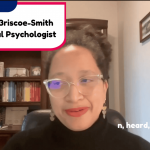3 Ways to “Turbocharge” Storytime

Research shows that reading to young children promotes brain development and early literacy skills. Reading to children — even long before they are able to follow the story — helps to build communication and language skills. It also helps strengthen vision, memory, problem-solving skills, and their bond with trusted caregivers.
A recent study estimates that children whose parents read 5 books to them each day will start kindergarten having heard 1.4 million more words than children whose parents never read books to them. The words that children hear when we read to them tend to be more complex, difficult, and varied than the words that they hear when you and others talk with and around them.That translates to a bigger vocabulary and stronger communication skills.
Another recent study indicates that even greater benefits can be obtained by making reading together a more interactive experience. Rather than simply reading the words on the page, when we make stories interactive by asking questions, inviting children to share observations, and using books to spark playful interactions together, we effectively “turbocharge” storytime. This type of reading, called “dialogic reading,” increases stimulation of the cerebellum — an area of the brain involved with skill acquisition and learning. Strategies such as pausing for children to complete a sentence, asking open ended questions or encouraging them to recall what happened a few pages back, and helping children make connections between what is happening in the book and their real-life experiences are all a part of dialogic reading.
Below are some ways that parents/caregivers can make reading more engaging for young children.
3 Ways to Engage Kids During Reading:
1. Be a Voice Actor
You may feel silly at first, but silly is great for keeping children engaged! Try to use a different silly voice or accent for each character to help them know who is speaking. Use your tone of voice to help children know what is happening — use a sad, weepy voice during sad moments, sigh with relief when problems are resolved, whisper if someone is sneaking around, and speak louder when a character is angry. If the story contains sounds, use your voice or body to make sound effects: crash! bang! boom! knock! la la la!
2. Make Connections
Nothing engages children in a story more than seeing themselves in the characters. When characters in the story have the same experiences or interests as your children, pause and point out the similarities. For example, “That duck’s favorite shoes are red, just like yours!”
3. Remember the Pictures
Take time to examine the illustrations. You might find that the pictures tell their own story! Ask children to locate interesting details, talk about the characters’ facial expression and their emotions, or talk with older children about the illustrator’s color choices and style. Pictures help children focus and encourage them to share their own observations with you. You can use pictures to ask questions: “Can you see anything red?” or “What is beside the dog?” or “How many butterflies do you see?”
Share This Info With Sparkler Parents
Use Sparkler’s library to share “Reading aloud to [Child]” with families so they can explore this content in their Sparkler app. If you encourage them to click this link from a mobile device, they can open the unit directly within their Sparkler mobile app!

